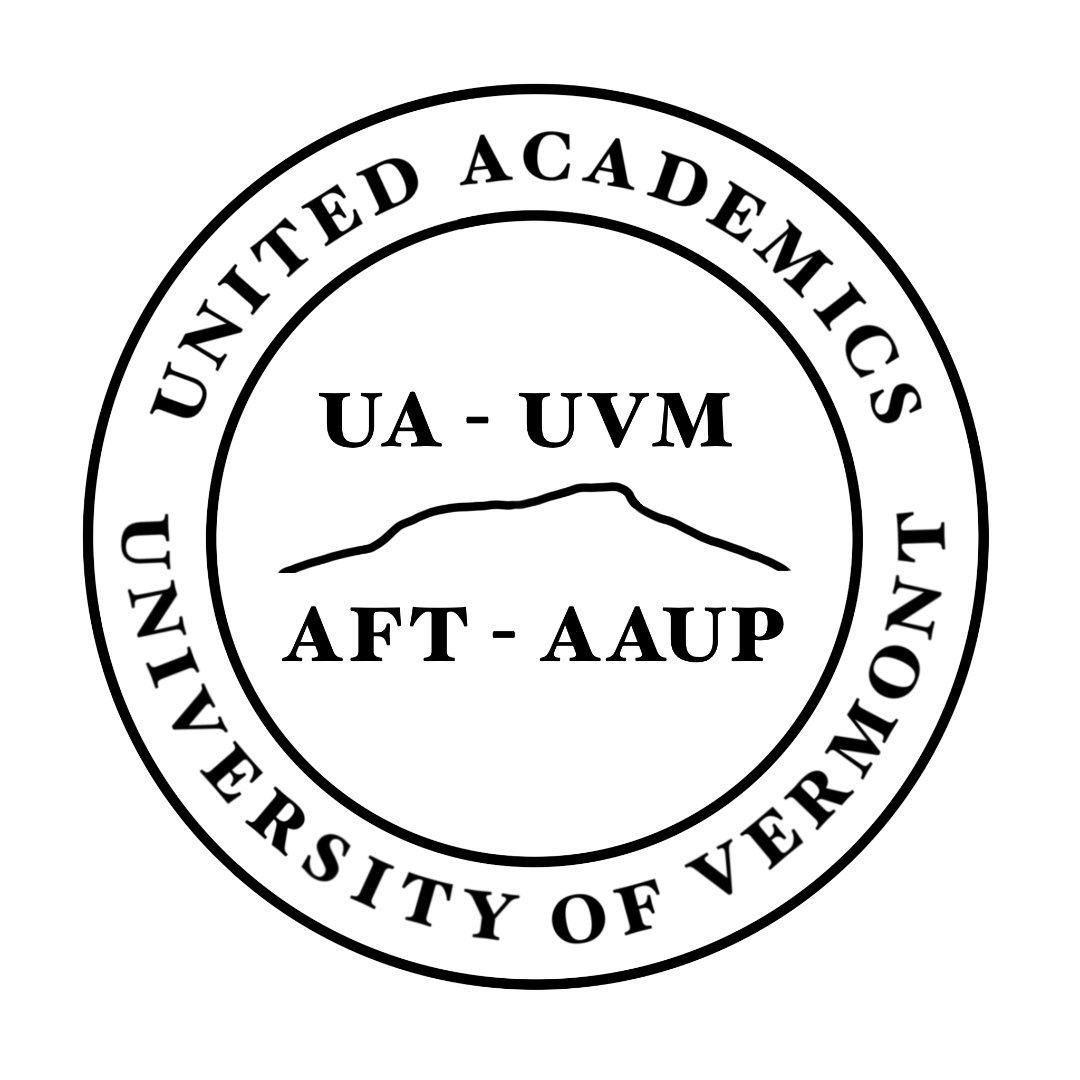Frequently Asked Questions about the Crisis in UVM’s College of Arts & Sciences
+ What cuts have been proposed for the College of Arts & Sciences (CAS)?
Two faculty members, with a combined service of 30 years to UVM, have received termination notices while 10 other faculty have had their positions reduced to three-quarters or half-time. These faculty cuts come amidst a multi-year hiring freeze across CAS, the positions of retiring senior faculty going unfilled.
+ How will these faculty cuts affect students’ academic experience?
A shrinking faculty means increased class sizes; the CAS dean’s office now proposes that 12% of introductory courses will have a minimum class size of 60 (up from 22, 35, or 40). With fewer faculty, course offerings and variety for all students are also shrinking. For example, UVM will no longer have a history sequence that includes Greece, Rome, the Ancient Near East, and Egypt. Previous rounds of cutting have left History without a U.S. Civil War-era historian and Global Studies and Asian Languages & Literature without faculty to teach Arabic.
+ What’s short-sighted about downsizing the liberal arts if enrollment and majors are down?
The value of Classics, Geology, or Spanish can’t be measured by the number of majors alone. Students seek minors in these fields, and faculty in these departments teach core requirements for all students. Trends in students’ choice of major are also highly variable. In the 1990s and early 2000s, UVM had so few engineering and business majors, there was talk of closing these programs down. Instead, UVM administration chose to preserve and build them up—just as they can do with the liberal arts now. UVM administration should also look at the role Incentive-Based Budgeting (IBB) has played in declining CAS enrollments. For instance, IBB provides a $2 million-a-year incentive to the College of Medicine to offer super-sized Wellness Environment courses to undergraduates—courses that could be taught by faculty from CAS’s Psychological Sciences or from the College of Nursing and Health Sciences.
+ Because CAS has a budget deficit, aren’t cuts necessary?
No. While the humanities at UVM are not immune from a nationwide trend of declining enrollments, the CAS “crisis” is largely manufactured. For starters, UVM administrators have reduced by nearly 22% the number of CAS applicants it accepts each year. Fewer accepted students results, unsurprisingly, in lower enrollments. The budget deficit also results from poor planning—the provost allocating too little of UVM’s total general fund to staffing the core liberal arts courses and campus-wide requirements in First-Year Writing, Sustainability, and Diversity that all UVM students depend on. The provost’s financial mismanagement extends beyond CAS too: A 2017 audit of UVM’s finances by the American Association of University Professors found that only 1 out of every 3 general fund dollars are spent on faculty positions.. If cuts are necessary, the provost and CAS dean should look first to the administrators and middle managers who do not teach and mentor students and who are not active scholars and researchers.
+ If sufficient resources aren’t devoted to academics, where does the money go?
Increasingly, UVM administrators are diverting funds to amenities and marketing, which they believe will attract students: the $90 million event center, the $3 million bridge between the Wellness Environment dorm and Howe Library, and, in CAS, positions for a communications director and a recruitment and retainment specialist.
+ What’s wrong with prioritizing amenities and marketing to attract students?
What’s wrong with prioritizing amenities and marketing to attract students? With universities across the country, UVM does indeed face a challenge in convincing students to apply and enroll. But it is quality academic experience and meaningful contact with faculty—not with a recruitment and retainment specialist—that convince students to stay. Students understandably feel they have been subjected to a bait-and-switch when the promises of their campus tours—small classes taught by teacher-scholars at a university combining the opportunities of a research university with the attention and rigor of a liberal arts college—are unfulfilled.
